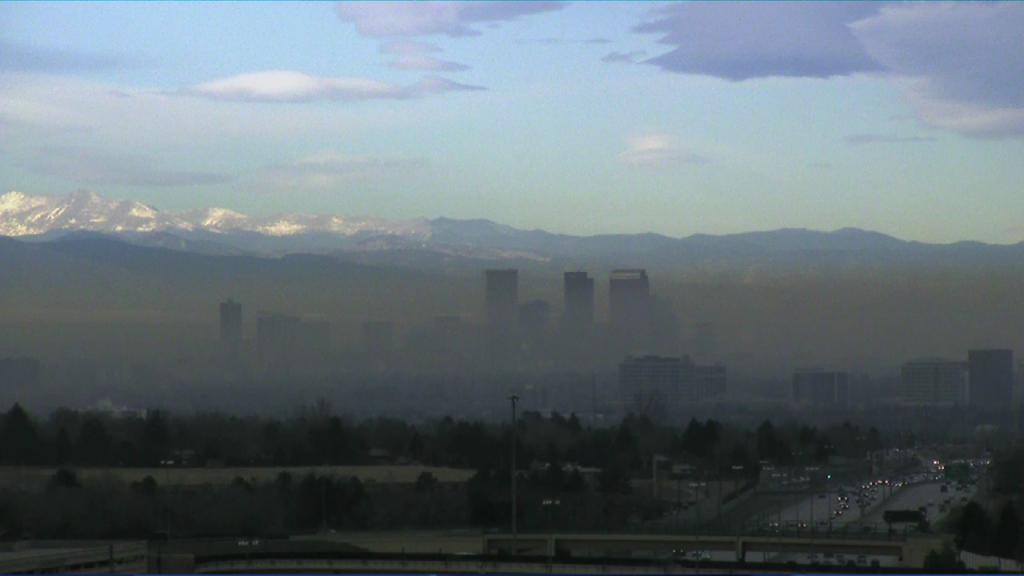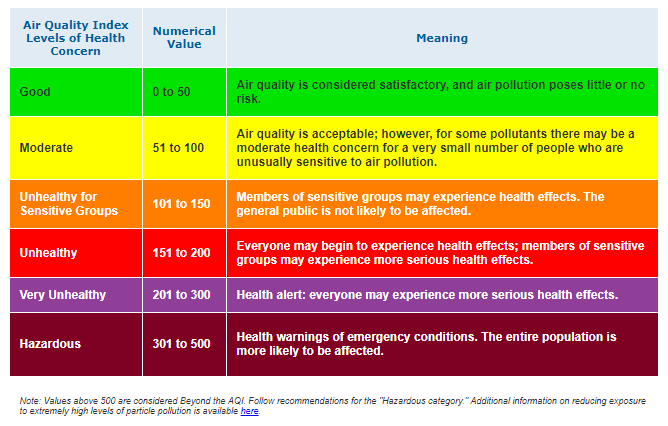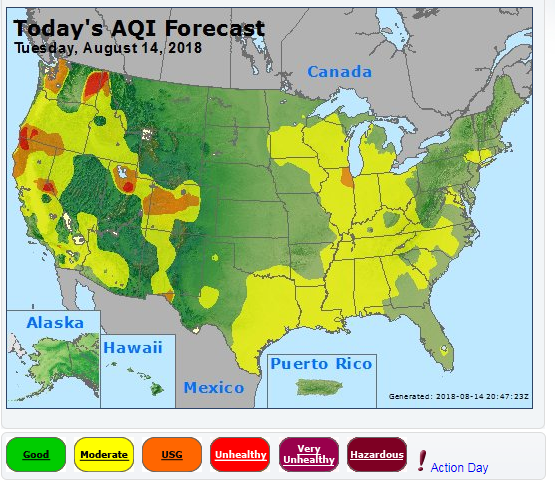What is Ozone?

Smog in Denver
Ozone, or trioxygen (O3), is a gas that is concentrated in the atmosphere to absorb most of the sun’s harmful (UV) rays. If you could see it, it would be a pale blue gas that smells like chlorine. It has industrial and consumer applications related to oxidation. This same oxidizing potential causes damage to mucous and respiratory tissues in animals, and plants. This makes ozone a potent respiratory hazard and pollutant near ground level. This happens when pollutants from cars, power plants, and other sources react in the presence of sunlight. It becomes a harmful pollutant known as “smog”. Ozone also has detrimental effects on agriculture as it interferes with photosynthesis and stunts the growth of some plan species.
When do unhealthy levels of ozone occur?
Ozone can reach unhealthy levels on hot sunny days in urban environments, but can also occur during colder weather.
Who is at risk?
People most at risk (members of “sensitive groups”) are people with asthma, children, older adults, and people who are active outdoors, especially outdoor workers. Children are at greatest risk from exposure because their lungs are still developing and they are likely to be active outdoors when ozone levels are high.

Air Quality Definitions
What symptoms might occur?
Ozone may cause irritation to the eyes, nose, throat and lungs. Cough, wheezing and shortness of breath may occur, which can lead to an worsening of your asthma, bronchitis or COPD.
How can we avoid low ozone levels?
The EPA has devised national and regional rules to reduce emissions of pollutants. These regulations are helping to improve air quality. Actions include industrial, vehicle and transportation standards as well as haze and visibility rules. We can reduce ozone by finding ways reduce unnecessary driving by taking mass transit, carpooling or combining trips. Gas up your vehicle in the early morning or late evening hours. Reduce or eliminate fireplace or wood stove use. Avoid burning leaves, trash or other materials. Avoid using gas-powered lawn and garden equipment. If you can’t avoid it, wear a mask or limit your time outdoors during high ozone days.
How can you monitor ozone levels?
The EPA has developed an Air Quality Index (AQI) to help explain air pollution levels. Under current standards, air quality is reported as levels between “good” and “hazardous”. Air quality forecasts are often given with weather forecasts on handheld devices, online or in the paper or television. You can check ozone levels and other daily air quality information by visiting https://www.airnow.gov and in many areas you can receive air quality notifications through http://www.enviroflash.info.

Example of an Ozone Forecast from AirNow.gov
Category: Uncategorized



